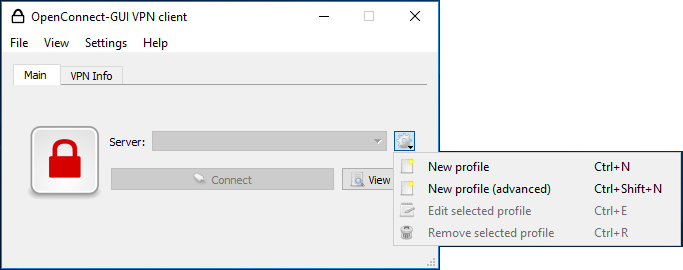
- #CISCO SSL VPN ON A MAC MAC OS#
- #CISCO SSL VPN ON A MAC PRO#
- #CISCO SSL VPN ON A MAC SOFTWARE#
- #CISCO SSL VPN ON A MAC PASSWORD#
- #CISCO SSL VPN ON A MAC DOWNLOAD#
Rekeying of phase 1: Not currently supported. Load balancing: Supported and can be enabled. Standard NAT traversal: Supported and can be enabled (IPsec over TCP isn’t supported). Perfect Forward Secrecy (PFS): For IKE phase 2, if PFS is used, the Diffie-Hellman Group must be the same as was used for IKE phase 1. IKE exchange modes: Aggressive mode for preshared key and hybrid authentication, or Main mode for certificate authentication.Įncryption algorithms: 3DES, AES-128, or AES256.Īuthentication algorithms: HMAC-MD5 or HMAC-SHA1.ĭiffie-Hellman Groups: Group 2 is required for preshared key and hybrid authentication, group 2 with 3DES and AES-128 for certificate authentication, and group 2 or 5 with AES-256. You can specify these settings to define how IPsec is implemented:
Privacy Preferences Policy Control payload settings. Dynamic WEP, WPA Enterprise, and WPA2 Enterprise settings. Kernel Extension Policy payload settings. Extensible Single Sign-On Kerberos payload settings. Extensible Single Sign-On payload settings. Exchange Web Services (EWS) payload settings. Exchange ActiveSync (EAS) payload settings. Conference Room Display payload settings. Certificate Transparency payload settings. Certificate Revocation payload settings. Certificate Preference payload settings. Autonomous Single App Mode payload settings. Active Directory Certificate payload settings. Automated Device Enrollment MDM information. Configure macOS for smart card–only authentication. Manage FileVault with mobile device management. Use a VPN proxy and certificate configuration. MacBook Air Wi-Fi specification details. #CISCO SSL VPN ON A MAC PRO#
MacBook Pro Wi-Fi specification details. iPhone, iPad, and iPod touch Wi-Fi specifications. Bundle IDs for native iOS and iPadOS apps. #CISCO SSL VPN ON A MAC SOFTWARE#
Manage configurations and software updates. Identify an iPhone or iPad using Microsoft Exchange. Integrate Apple devices with Microsoft services. Manage content caching from the command line on Mac. Configure advanced content caching settings on Mac. Review aggregate throughput for Wi-Fi networks. Deploy devices with cellular connections. Add Mac computers to Apple School Manager or Apple Business Manager.  Deploy devices using Apple School Manager or Apple Business Manager. Your Mac will now be connected to the Rutgers VPN. For Duo Action, enter push, phone or sms depending on how your NetID + account is setup.
Deploy devices using Apple School Manager or Apple Business Manager. Your Mac will now be connected to the Rutgers VPN. For Duo Action, enter push, phone or sms depending on how your NetID + account is setup. #CISCO SSL VPN ON A MAC PASSWORD#
You will be prompted for your username, password and Duo Action. Go to Applications/Cisco and double click Cisco An圜onnect Secure Mobility Client. Click on Allow to unblock the extension.Ī dialog box will appear stating that the System extension has been enabled. Click on the Lock in the lower left to enter an admin user’s username and password. Click on Open Preferences in either of the popup windows. #CISCO SSL VPN ON A MAC MAC OS#
Mac OS security initially blocks the Cisco extensions.Ĭisco An圜onnect will install but the System Extensions will be blocked by the OS. In the Downloads folder, locate and run the An圜onnect Secure Mobility Client installation package.Ĭisco An圜onnect can only be installed by a user with admin rights on a Mac.If it fails to start downloading you should see an option to click “An圜onnect VPN” and you will be prompted to save the client. Once you’ve authenticated an automatic installation should begin.
#CISCO SSL VPN ON A MAC DOWNLOAD#
Download the An圜onnect installer from.


Some images may be slightly different on each system and OS version. The screen shots that follow are what the user should see upon installing Cisco An圜onnect VPN on a Mac.
Go to and click on the Activate netID button.ĭownloading & Installing Cisco An圜onnect Client. NOTE: You don’t have to activate the service again if you have listed next to the Remote Access option. Select the Remote Access VPN, Cisco An圜onnect Access for Rutgers Option. Go to and select Service Activation on the left of the site. Activate the Remote Access Service on their netID accountīefore using Cisco An圜onnect you will need to activate the service on your NetID. Before users can connect to the Rutgers VPN with the Cisco An圜onnect app, they need to do the following:







 0 kommentar(er)
0 kommentar(er)
